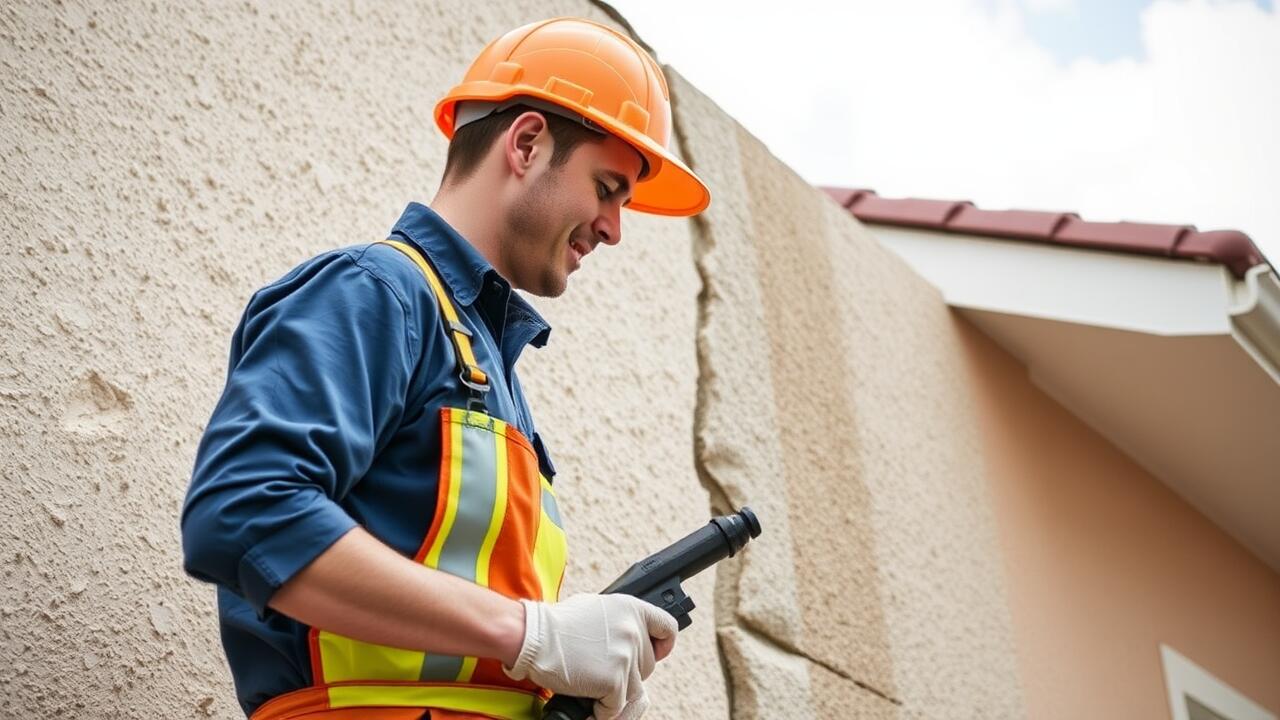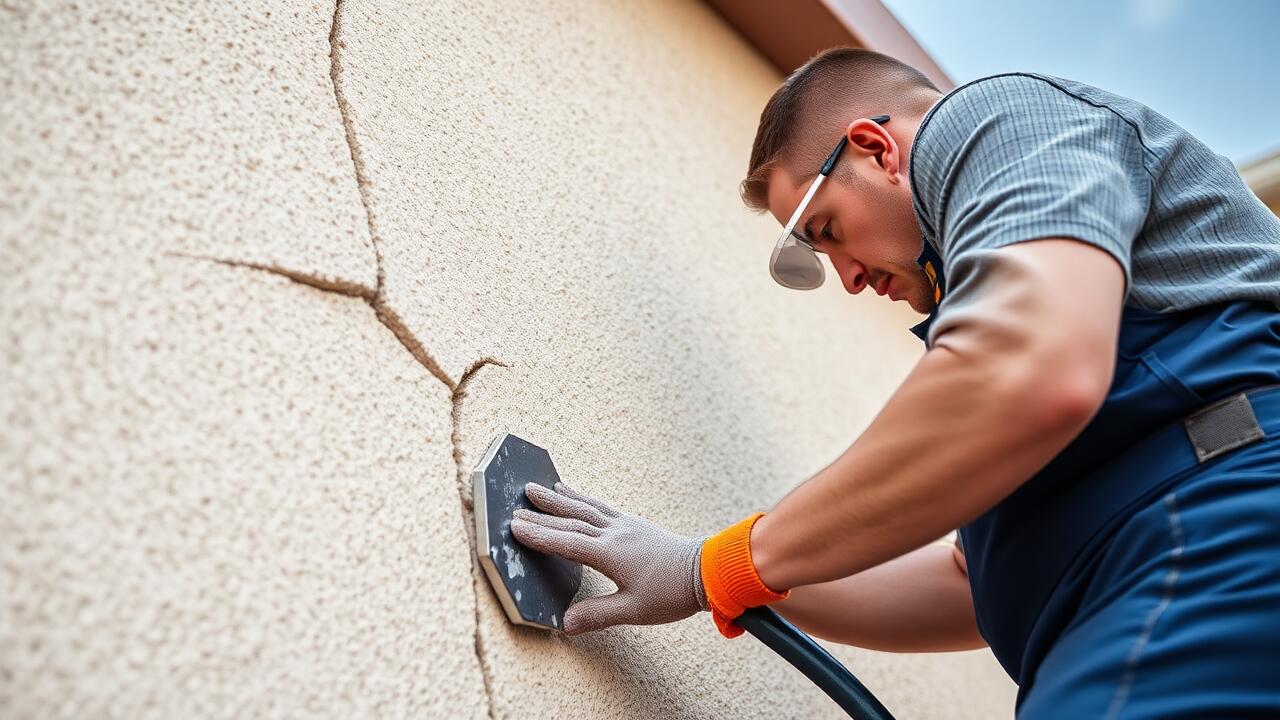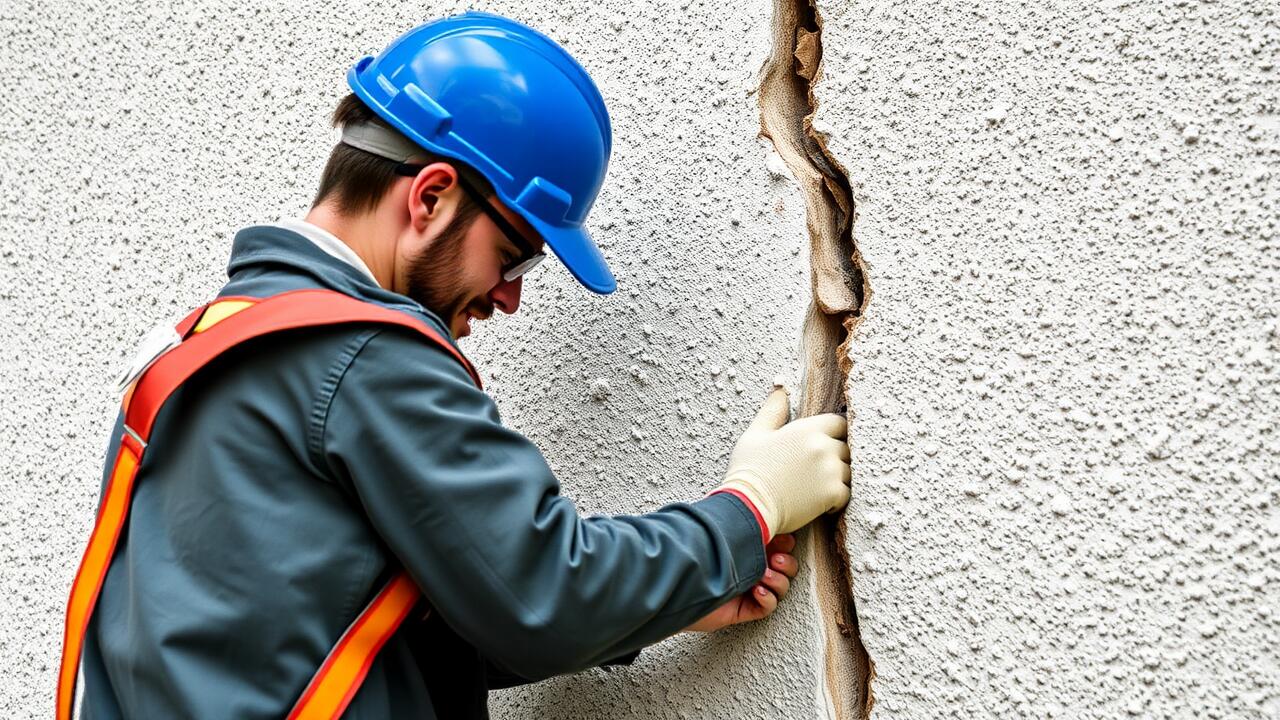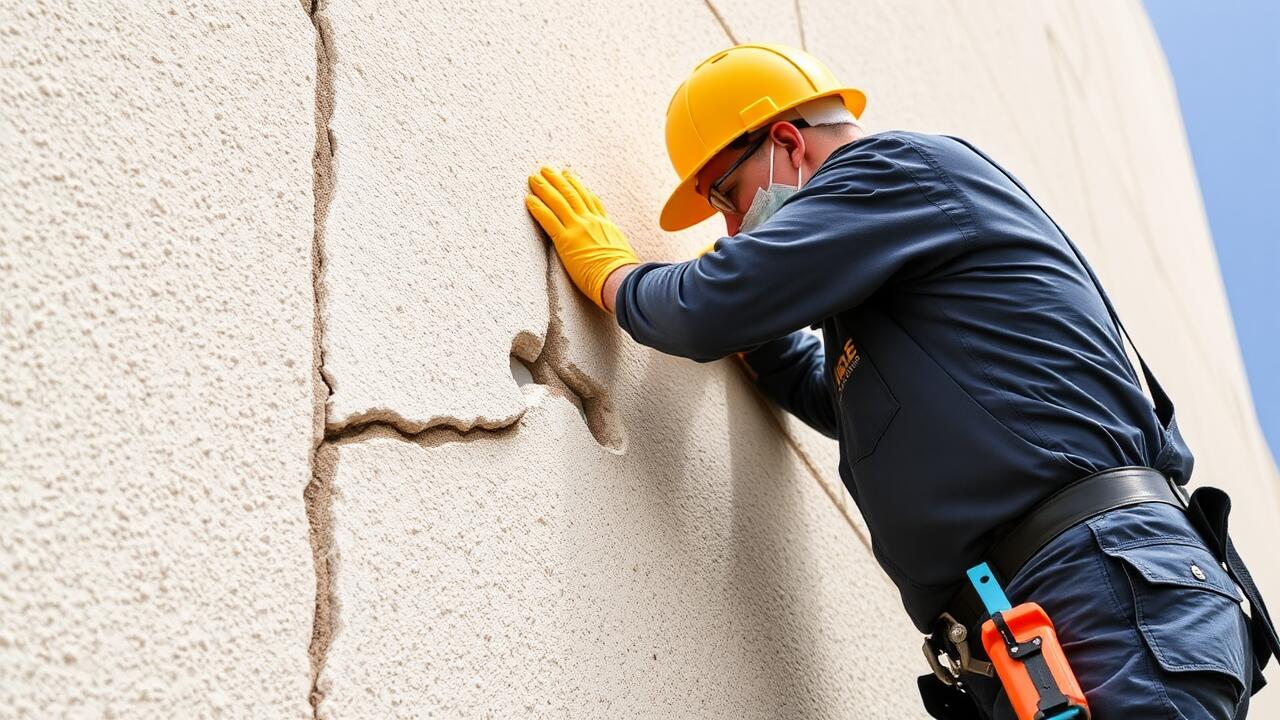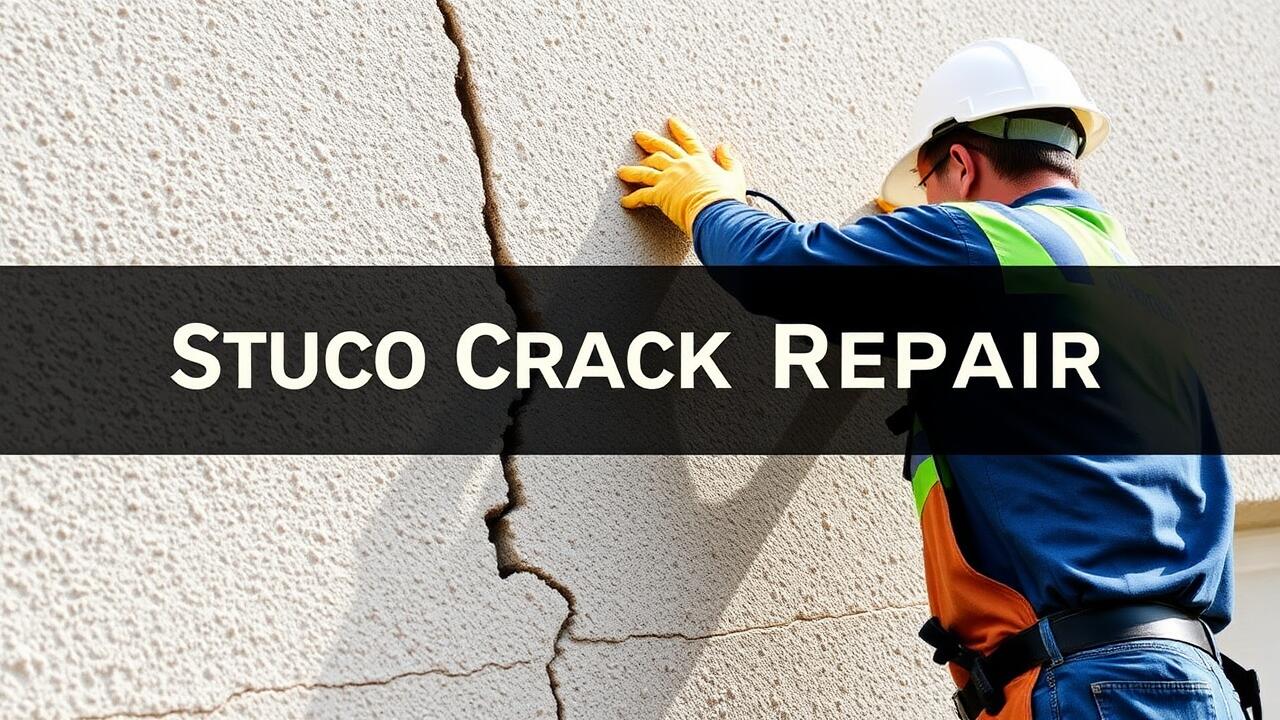
Addressing Larger Damages
When tackling larger damages to stucco, it's essential to first assess the extent of the cracks or holes. For significant issues, you may need to remove sections of damaged stucco to expose the underlying structure. This preparation ensures a solid base for the repair and prevents future complications. Inspect the area for any water damage or mold, as these issues could indicate underlying problems that require attention before you proceed.
After addressing any underlying concerns, the next step involves filling the damaged areas with a suitable patching material. For those in the Westchester, Los Angeles area, local services like Stucco Crack Repair Westchester, Los Angeles can provide expert assistance in repairing extensive stucco damage. Making sure to pack the material firmly into cracks and edges will create a durable, lasting bond. Properly applying this phase is crucial for achieving a seamless repair that blends with the existing texture.
Techniques for Extensive Repairs
For extensive repairs to stucco, a precise approach is necessary. Begin by assessing the damage and determining the extent of the repairs needed. If you encounter larger cracks or holes, it’s essential to clean the area thoroughly to remove loose material. Using a chisel, widen the crack slightly to allow for better adhesion of the new material. This process helps ensure a secure bond between the existing stucco and the new application. Over the damaged area, apply a bonding agent to promote adhesion, particularly in cases where the repair is sizable.
Once the surface is prepared, it’s time to mix your stucco. Combining sand, cement, and water in the right proportions is crucial for a successful repair. For a standard mix, professionals often suggest a 1:3 ratio of cement to sand. Apply the new stucco using a trowel, making sure to pack it well into the repair area. As you work, keep the texture consistent with the surrounding stucco to ensure a seamless finish. For homeowners seeking professional assistance, services like Stucco Crack Repair Van Nuys, Los Angeles can efficiently address these extensive repairs.
Mixing Stucco for Repairs
When mixing stucco for repairs, it is essential to use the correct ratios to ensure a durable and consistent mixture. Generally, a standard mix consists of one part cement, one part lime, and two to three parts sand. This combination provides the necessary strength and flexibility to withstand various weather conditions. Additionally, adding water gradually during the mixing process will help achieve a workable consistency. Be mindful to mix thoroughly to eliminate any lumps or dry patches.
For localized repairs, using pre-mixed stucco can simplify the process. This option often includes modified polymers for enhanced adhesion and durability. Homeowners in need of professional assistance may consider services such as Stucco Crack Repair Van Nuys, Los Angeles, which can provide expertise in mixing and applying the right type of stucco for their specific needs. Whether preparing a custom mix or opting for a store-bought solution, maintaining the proper balance of materials is crucial for a successful repair.
Proper Ratios and Mixing Instructions
When preparing to mix stucco for repairs, precise ratios of ingredients are essential to achieve a durable finish. A typical stucco mixture consists of Portland cement, sand, and water, often in a 1:3 ratio of cement to sand. Adjustments can be made based on the specific requirements of the surface and the environmental conditions. For instance, in areas with high humidity, a slightly wetter mix can help ensure proper adhesion and workability.
In addition to the basic ingredients, additives may enhance the stucco's performance. For example, incorporating a bonding agent can improve adhesion between layers. It is crucial to mix the components thoroughly to avoid inconsistencies in texture and strength. Those undertaking stucco repairs in areas like Stucco Crack Repair Van Nuys, Los Angeles, should ensure their mix is tailored to withstand local climate conditions while maintaining the integrity of the structure.
Applying New Stucco
When applying new stucco, preparation is essential for ensuring proper adhesion. Begin by dampening the repaired area slightly with water to improve the bond between the old and new stucco. Use a trowel to apply the mixture evenly to the surface, working from the bottom up. This technique helps prevent sagging and allows for better control of the material. Smooth the new stucco with the trowel for a uniform appearance, taking care to match the texture of the surrounding areas.
After the initial application, let the stucco set for a short period before finishing the surface. Use a finishing trowel to create the desired texture, whether it be smooth, rough, or patterned. For those in need of professional assistance, services like Stucco Crack Repair Van Nuys, Los Angeles can offer expertise in achieving a seamless repair. Adequate curing time is crucial, so allow the newly applied stucco to dry properly before painting or sealing.
Techniques for Even Application
Achieving an even application of stucco requires attention to technique and material consistency. Start by using a stainless steel trowel for the best results. Begin at the bottom of the repair area and work your way up, applying the stucco in small sections. This allows for better control and helps maintain an even surface. For larger areas, consider using a hawk to hold the mixture, making it easier to transfer to the wall without interruptions.
It is crucial to feather the edges of the new stucco into the existing material. This process helps to minimize visible seams and blend the new application with the surrounding surface. When performing these repairs, taking your time ensures a smooth finish. If you’re not comfortable handling the application, seeking professionals specializing in stucco repair, such as those offering services like "Stucco Crack Repair Van Nuys, Los Angeles," can lead to better results.
FAQS
What are some common signs that my stucco needs repair?
Common signs include cracks, bulging, discoloration, or water damage. If you notice any of these issues, it's time to assess and repair your stucco.
Can I repair stucco myself, or should I hire a professional?
Minor repairs can often be done by homeowners with some DIY experience. However, extensive damage or structural issues may require a professional for proper repair.
How long does it take to repair stucco on the outside of a house?
The time it takes to repair stucco varies depending on the extent of the damage. Minor repairs may take a few hours, while larger projects could take several days or longer.
What materials do I need for a stucco repair?
You will need stucco mix, water, trowels, a hawk, a float, and potentially a bonding agent, depending on the repair type. It's also beneficial to have a grinder or wire brush for surface preparation.
How can I ensure that my new stucco matches the old finish?
To match the old finish, take samples of the existing stucco texture and color to your local home improvement store. You can also mix pigments into your stucco mix to achieve a closer match.
